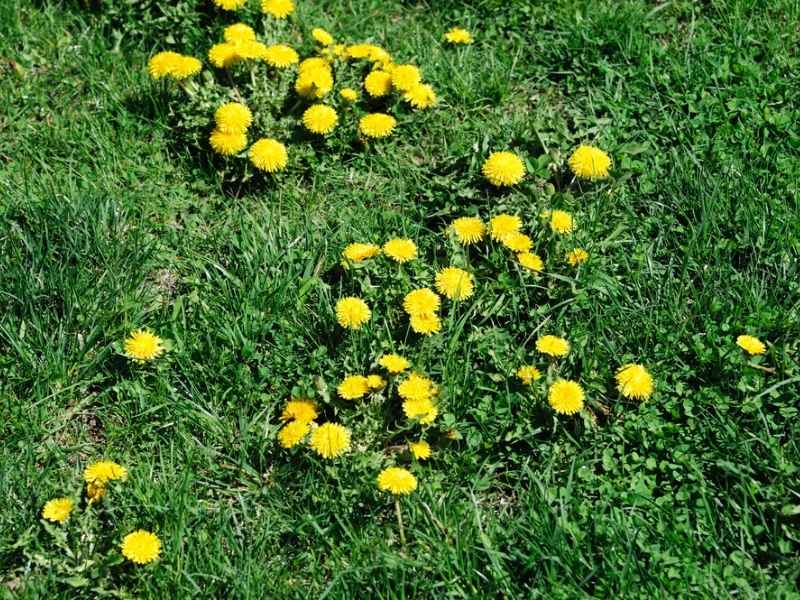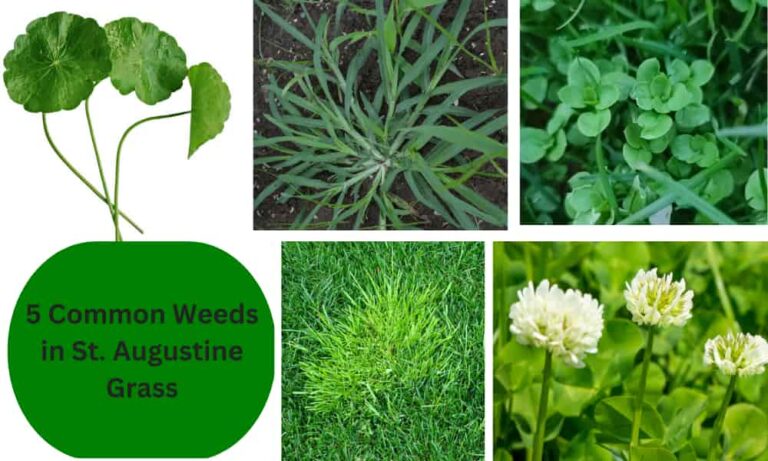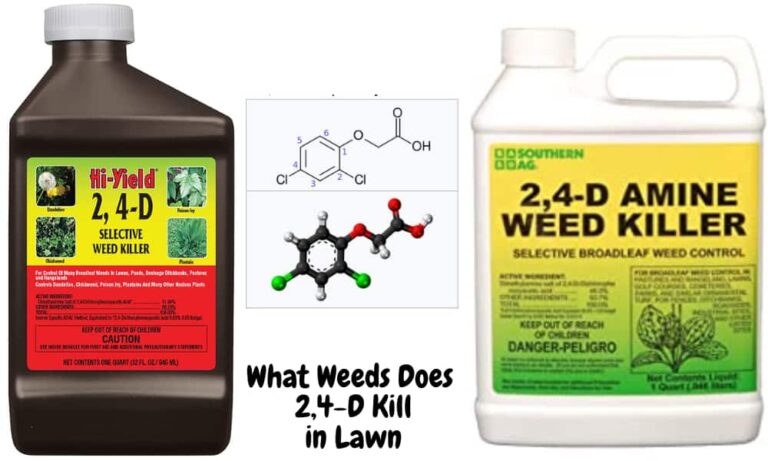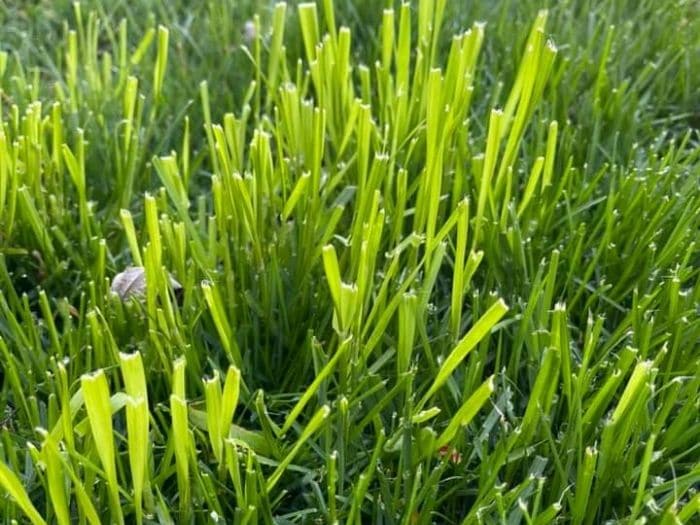Overseeding a Lawn with Weeds: Should You Kill Weeds First?
A lawn full of weeds can become even more problematic if you don’t overseed the right way. Overseeding is meant to renew your lawn, fill in any bare spots, and make the turf dense. But, when your lawn is full of weeds, should you go ahead and overseed without killing weeds first?
Overseed your lawn in the fall after killing weeds in late summer. If you’re late, scalp the weedy lawn, rake away all the debris, and spread grass seed. Some weeds will germinate and grow with the grass, but you can control them using a post-emergent herbicide before they spread further.
It is not a good idea to plant and grow new grass over weeds because weeds compete for nutrients and water in the soil, which leads to poor germination and growth of the newly planted grass.
I invite you to join our Lawn Care Group where we all interact, ask, and answer peer questions.
Should I Kill Weeds Before Overseeding?
Kill and remove weeds from your lawn at least 6 weeks before overseeding if you’re using a post-emergent herbicide. Alternatively, remove weeds by hand-pulling manually. Weed killers will affect the seed germination, so, allow enough time as indicated on the product label before planting grass seed.
Since the best time to overseed most lawns is fall, late summer is a good time to put down a post-emergent weed killer. By the time fall comes, it will be at least 4-6 weeks since you applied a weed killer, which is safe for planting grass seed.
How to Overseed a Weedy Lawn

Weeds like bare spots and can continue to spread and invade your lawn if you don’t do anything about them. That’s why overseeding helps control them by making your lawn thicker and fuller, and able to choke out weeds.
Overseeding is time and cost-effective, as you don’t have to till and tear apart your lawn. Instead, you’re breathing life back by adding more grass seeds on top of an existing lawn. If done right, this technique lets you grow enough lush lawn that fills in the bare or thin patches in your yard, leaving no room for weeds to grow.
Here’s how to overseed a lawn with weeds:
1. Pull out the weeds manually
Remove weeds from your lawn manually using a weed puller. Pulling weeds out by hand is highly recommended especially if the weeds are grown and visible. Do not apply herbicides on your lawn before overseeding as this can cause poor germination of grass seed.
If you prefer using a weed killer before overseeding, do so early enough to allow time for the herbicide to break down completely before spreading grass seed. Most pre-emergents and post-emergent herbicides have indicated waiting periods before you plant grass seed.
Here’s how to pull out weeds by hand:
- Water your lawn deeply to make the soil soft.
- Pull out weeds by hand or using a weed puller.
- Throw the weeds away from your yard.
In some cases, you may not need to apply a weed killer as weeds like crabgrass usually die off as the weather becomes cooler. If you have annual weeds, just overseed your lawn with weeds late in the fall and allow the new grass to grow. By the time spring comes, your lawn will grow thick and full enough to choke most annual grassy weeds.
2. Mow the lawn on the lowest setting
Set your mower to the lowest setting possible in order to scalp the lawn you want to overseed. Scalping your lawn helps improve the seed-to-soil contact that in turn improves the rate of seed germination. Set your lawn mower’s deck as low as possible – though any setting between 1.5 and 2 inches would be a good option to consider if the lawn does not have too many weeds.
- If your lawn is level, you can set the mowing deck as low as 1 inch from the ground.
- If your lawn is bumpy, set the blades a little higher – up to 2 inches to prevent damaging the blades.
Pro tip: Always bag clippings if your lawn has weeds that have gone to seed to prevent spreading weed seeds all over your yard and worsening the problem.
It is also a good idea, in my experience, to mow right before the rainy week to keep the lawn moist. It makes my mowing job a lot easier as the grass is soft and the thatch easy to remove right before overseeding weedy lawns.
3. Remove grass clippings
Use a rake to remove grass clippings and other debris that’s covering the soil. The process of raking also helps loosen up the top soil in your yard.
If you mowed a little higher, you might have a lot of thatch remaining on the soil surface. Use a heavy duty rake to remove any debris that can prevent your grass seed from staying in contact with the soil for germination.
A good rake can also help you remove any moss that may be growing under the grass in your lawn.
4. Dethatch the lawn
A thick layer of thatch can also cause seed to soil contact problems. Use a dethatcher to break down the thick thatch and then collect the loosened-up trash bag and throw it away on your compost.
Alternatively, run a power rake all over the weedy lawn to loosen up any thatch and tangled-up grass.
When I have a large weedy lawn to overseed, I find it helpful to rent a slit seeder to complete the task in the shortest time possible.
5. Aerate the lawn
By the time it is fall, the soil is usually compacted already, which is why the grass in your yard is growing slowly while the weeds grow faster. After removing the weeds, mowing, and dethatching, core aerate the lawn to allow air, water, and nutrients to be easily accessed in the root zone.
The cores created in the yard will also allow for better seed-to-soil contact as soon as you overseed. This process is better than just sprinkling grass all over the lawn because it improves the rate of seed germination.
6: Spread the grass Seed
Spread grass seed over the prepared area using a lawn spreader. Follow the recommended spreader settings for the type and variety of grass seed you’re overseeding your lawn with to ensure you’ve put down enough make your turf thick and full the next season.
Pro tip: Spread a thin layer of straw to cover grass seed and prevent birds from causing damage. You can also use bird deterrents if you don’t want to cover the grass seed.
For the best results, plant one-half of the grass seeds in one direction and the other half in the opposite direction. I recommend using a lawn spreader for even distribution of the seeds.
Also, you need to make sure the seeds have a good contact with the soil because this helps with proper germination and enhances growth. You can use a water-filled roller or the back of metal rake to establish the recommended contact between the soil and your grass seeds.
7. Gently rake in the grass seed
Raking is important as it helps the seeds come into contact with the soil to germinate properly. If you used a spreader or simply broadcast the seeds with your hand, the grass seed isn’t in proper contact with the soil.
Lightly rake in the seed over the overseeded area to improve contact and promote faster germination. Raking will also prevent water from washing away seeds in your lawn when you irrigate.
8. Water your overseeded lawn lightly
Water the overseeded area lightly to keep the soil moist enough for the grass seeds to germinate and grow. Do not use a heavy sprinkler because it can easily erode the seeds away from the desired area.
Here’s a video on how to prepare and overseed a lawn with weeds:
How to Control Weeds after Overseeding
Weeds may sprout in your lawn soon after your grass seed starts to germinate. At this time, do not apply herbicides yet. Applying herbicides too soon can kill or weaken the young grass shoots.
Wait until the roots have established and the crown matured enough to withstand the strength and effect of the chemicals.
Also, instead of using equipment such as a power rake, which disrupts lawn surfaces, use less disruptive tools such as a hand rake, as they cause less disruption and don’t leave bare patches on the lawn.
Overseed your lawn at the right time to reduce weed competition and enhance the dramatic, successful growth of the overseeding process. You can overseed cool season turf grasses between mid-August and mid-September as a way to fix a weedy yard. These are favorable times for their germination and establishment.
Can I overseed after weed and feed?
It is not recommended to overseed your lawn after applying weed and feed fertilizer. This type of lawn food contains herbicides that can inhibit germination of both grass and weed seeds. If you’ve just put down weed and feed, wait at least 6 weeks before sowing grass seed.
Read the weed and feed product label for the recommended time to wait before reseeding your lawn. Follow the instructions to ensure you achieve a high germination rate when overseeding a weedy yard.
While fall is the perfect time to overseed your lawn and encourage weed control, there are other seasons to overseed provided you understand the risks.
You can overseed in the early spring, but make sure the lawn is well drained for the best results. Weed competition is more progressive and intense as spring progresses. So unless you time the overseeding period before weed germination in spring, doing so at this time may not be effective.
Summer is the least desirable time to overseed your lawn especially if it has weeds. In early summer, the conditions are so hot that there’s a huge demand for irrigation for proper overseeding to be possible. This is also the time when broadleaf weeds tend to thrive, and therefore your overseeding efforts are likely to fail.
Overseeding will make your lawn fuller, and thicker; and improve its pest, disease, and weed resistance. Remember, care for and maintain your lawn after reviving its look and density. Some tips include sufficient watering, proper fertilization, consistent weeding, foot traffic control, and proper mowing.
Sources + References
- University of Maryland: Lawn Renovation and Overseeding
- Thomas M. Smith, Grass Roots, Inc.: Weed Control Strategies When Overseeding

![Killing Crabgrass With Baking Soda [Homemade Killer With Pictures]](https://lawnmodel.com/wp-content/uploads/2020/11/Baking-soda-crabgrass-killer-homemade-768x546.jpg)




